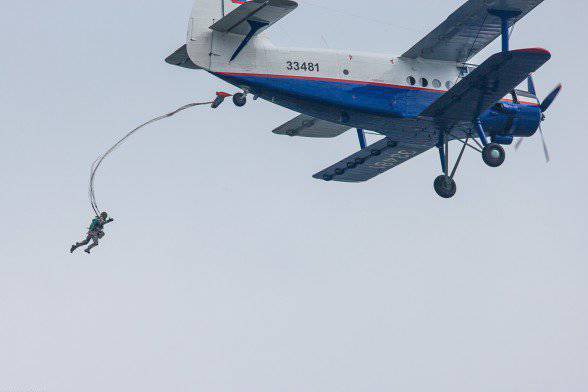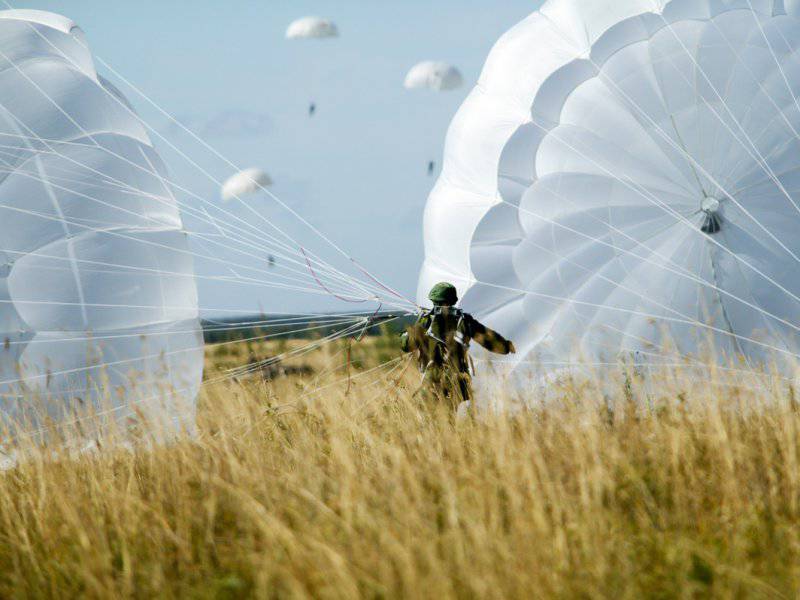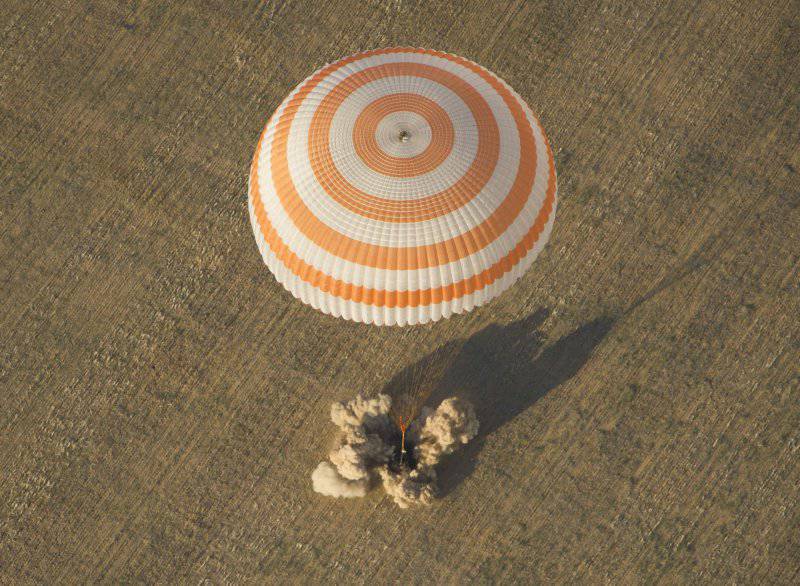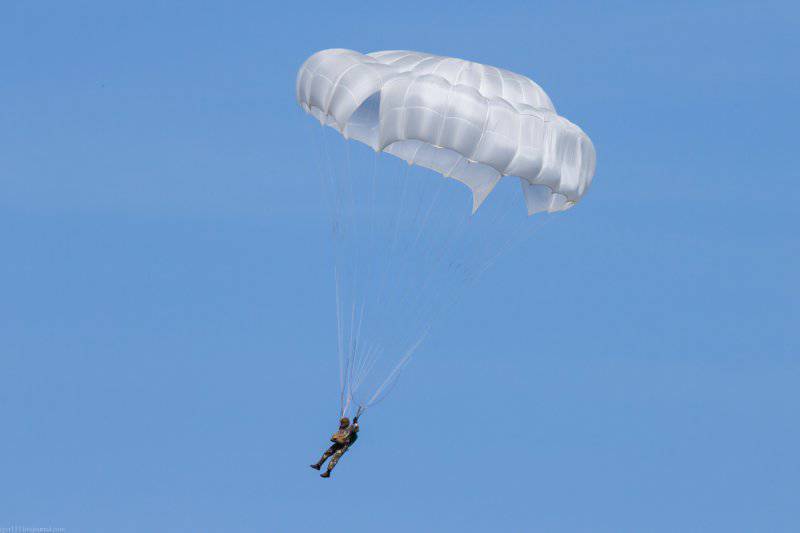Prospects for the development of parachute systems

Every year on July 26 in our country amateurs and professionals of parachuting celebrate the Day of skydivers. The structure of the holdingAviation equipment »Rostec State Corporation includes the Research Institute of Parachuting, which is one of the few enterprises in the world that independently carry out the full cycle of creating parachute systems.
Today, the Aviation Equipment holding company of the Scientific Research Institute of Parachute Engineering is the lead developer of parachute systems for various purposes: rescue, landing, sports and training, landing brakes, antispin, cargo, for unmanned vehicles, for dropping combat equipment and calculations, for space and other types parachute technology.
Over the years, more than 5000 types of parachute systems and more than 1000 samples have been introduced into mass production at the institute. Vladimir Nesterov, honored test parachutist, who has about 13 thousands of jumps on his account, told about the achievements of Russian parachute building, the current industry trends and the challenges facing specialists.
Vladimir Nesterov not only conducts tests of parachute equipment, but also takes direct part in the development of parachute systems. The tester has several patents. Recently, Vladimir Nesterov received a patent for the human parachute system for parachutist dropping of heavy oversized cargo.
“With the development of equipment and weapons, the paratrooper's equipment is constantly being improved,” says the tester. - The weight of equipment is growing, respectively, and the load capacity of the parachute system should increase. Not all equipment paratrooper can place on yourself. " The tester says that a significant part of the cargo must be placed in a special container, landed together with the parachutist. Place a person and a parachute system with a container inside the aircraft is quite problematic because of their size.
“Therefore, an idea arose: to place a cargo container on the back of a parachutist, and remove the parachute from it and fasten directly to the cable that is inside the aircraft. It turns out that the parachutist takes the same place, but can take with it much more workload, ”says Vladimir Nesterov.
Testing of all parachute systems manufactured by research institutes, according to Vladimir Nesterov, is carried out very carefully. “Both civilian and military parachutes undergo a specific development cycle: from a draft design to flight testing,” says Vladimir Nesterov. - Flight tests precede ground. The programs are typical, but depending on the particular design of the parachute may vary. All physical and mechanical indicators, the order of entry into operation of elements, closing and opening devices, strength characteristics are checked. In each of the programs check the order of 20 different items. "
The principle of testing - from simple to complex. First, the parachute system is tested with a dummy, and then the test paratroopers start work.
One of the novelties of the research institute of parachute building, in the development and testing of which Vladimir Nesterov took part, is the promising parachute system D-12, also known as “Leaf”.
“Its main advantage will be that it will allow the parachutist of a greater mass to be landed,” says Vladimir Nesterov. “Accordingly, he will be able to take more equipment with him.” The advantage of the D-12 will be a new reserve parachute, which, in the event of a system failure, will ensure the safe landing of both the parachuter and the cargo.
“For a paratrooper, a parachute is, first of all, a means of delivery to a war zone,” the tester notes. “In any case, he should not just be saved, but accomplish the main task.”
In the future, it is planned that this parachute system will replace the D-6 and D-10 parachutes that are in service with the Russian Airborne Forces. The parachute showed good results during the tests.
Now the research institute is finalizing the insuring device for the D-12 reserve parachute. This will be a special electronic device that automatically activates the "reserve". The block independently monitors three parameters: a sharp uncontrolled increase in the rate of decrease, a sharp process of the flow of turbulence and an increase in pressure in the aneroid device.
Vladimir Nesterov spoke about parachutes for landing cargoes and systems for returning space objects. Among the developments that are currently being conducted by scientific research institutes, he highlighted the new system for landing airborne equipment of the Airborne Forces (self-propelled artillery installations, BMD, etc.).
Especially for the needs of the Airborne Forces, the Institute creates multi-domed parachute systems for landing combat vehicles. For example, the ISS-350-14М (for landing the self-propelled gun "Sprut-SD"), the ISS-350-12М of the 2 series (for landing BMD), as well as parachute complexes of military equipment with the crew of the Shelf-1 and the Shelf-XNUM ".
The research institute is proud of the development of the D-10P parachute system, which was first demonstrated at the MAKS air show in the 2013 year, exactly by Vladimir Nesterov.
This system is designed to solve the tasks of special divisions, as well as the provision of emergency assistance. The parachute allows you to jump from a height 70 m. Thanks to the additional device mounted on a parachute, it opens independently, without the participation of the paratrooper.
The urgency of this task, according to Vladimir Nesterov, was dictated by life itself. Model D-10P will help in the service of parachutists, rescuers, Emergencies Ministry and the Air Force. “Now there are two types of parachutes in the service of the army and other departments: with a hemispherical dome and planning,” says Vladimir Nesterov. - Planning to perform jumps with a very strong wind on the ground and with very high precision landing. For them, the minimum jump height is 500 – 600 m. ”
Parachutes with a hemispherical dome do not allow to overcome a strong wind, because they have a low horizontal speed. At the same time, they have several advantages: you can jump from extremely small heights. In some cases, especially when carrying out evacuation works, systems are needed that allow jumps from a height below 200 m.
“The reliability of parachutes for such jumps should be very high. As a rule, increased reliability is achieved by simplifying the design, ”says Vladimir Nesterov. - They took as a basis the usual modern parachute of the type D10. Simplified his scheme. Conducted research. During the test, we reached the height of 70 m. "
The Institute, part of the holding "Aviation Equipment", has been and remains the world leader in the field of parachuting. There are all conditions for the development of the industry and the expansion of the range of scientific, design and technological prospects. The holding specialists with confidence declare that they will make every effort to strengthen Russia's leading role in the field of world parachute engineering.



Information